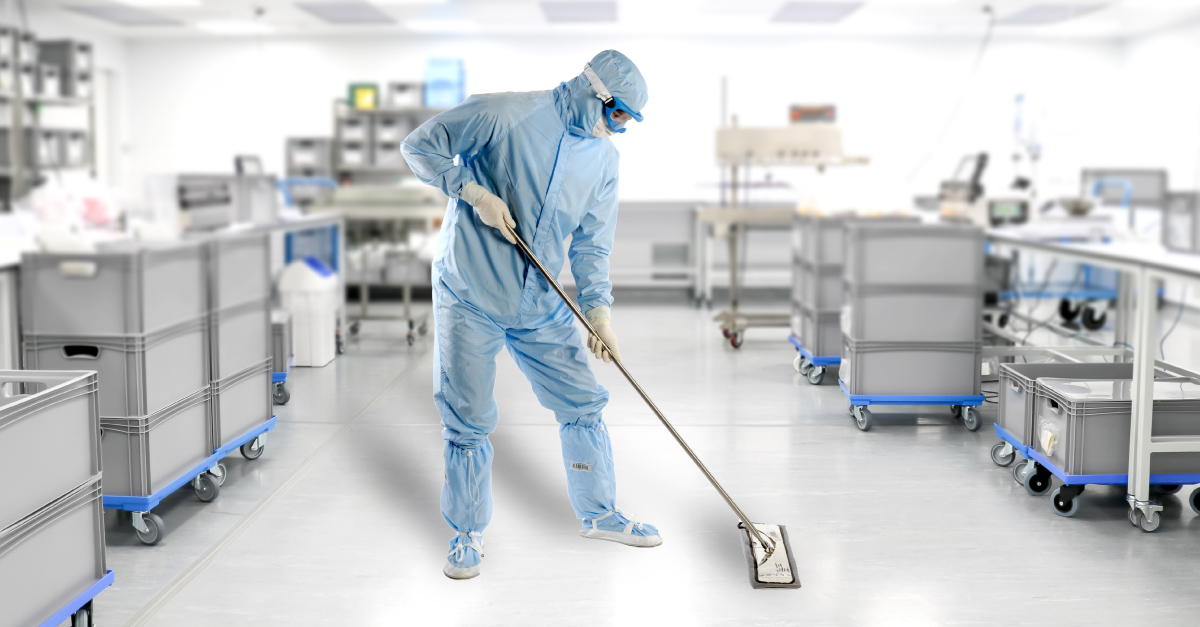Big Blue Blog - Contamination Control and the Requirement for Cleaning
 BlogCleanroom02.06.2022
BlogCleanroom02.06.2022
A large amount of time, energy and money is usually expended on the design and development of contamination control facilities.
Re-usable cleanroom garments are extensively packaged to protect the garments from contamination during transport and storage, the outer layers of packaging will become contaminated and the opening and removal of packaging and the packaging material itself all produce contamination.
Removal and disposal of cleanroom clothing will also generate significant particulate.
Transfer of equipment and materials into the cleanroom will be strictly controlled but the transfer operation, including removal of packaging, will also produce contamination.
As part of the production process staff will be required to operate equipment and handle different materials. Touching and contacting may contaminate gloves and other surfaces on the cleanroom gowns and may create a cross-contamination risk to other items and work surfaces.
The production machinery and process may also produce fibres and particulate and some operations may produce vapour or droplets which can be deposited onto surfaces leaving contaminating residues.
A fully-operational cleanroom may therefore become contaminated by a range of materials.
These can be usefully considered as either large visible contaminants such as discarded packaging or visible liquid droplets, or as microscopic particulates and fibres of approximately 50µm or less which are not visible in normal light.
When the concentrations of such small particles build up and become visible the cleanroom surface cleanliness levels have been grossly violated. For cleanrooms utilised by the healthcare industry, the cleanroom surfaces must also be disinfected to kill any viable contamination that may be present.
Removal of visible contamination requires good housekeeping and effective basic cleaning techniques. Removal of microscopic contamination is achieved using specialised cleanroom cleaning materials and procedures.

Re-usable cleanroom garments are extensively packaged to protect the garments from contamination during transport and storage, the outer layers of packaging will become contaminated and the opening and removal of packaging and the packaging material itself all produce contamination.
Removal and disposal of cleanroom clothing will also generate significant particulate.
Transfer of equipment and materials into the cleanroom will be strictly controlled but the transfer operation, including removal of packaging, will also produce contamination.
As part of the production process staff will be required to operate equipment and handle different materials. Touching and contacting may contaminate gloves and other surfaces on the cleanroom gowns and may create a cross-contamination risk to other items and work surfaces.
The production machinery and process may also produce fibres and particulate and some operations may produce vapour or droplets which can be deposited onto surfaces leaving contaminating residues.
A fully-operational cleanroom may therefore become contaminated by a range of materials.
These can be usefully considered as either large visible contaminants such as discarded packaging or visible liquid droplets, or as microscopic particulates and fibres of approximately 50µm or less which are not visible in normal light.
When the concentrations of such small particles build up and become visible the cleanroom surface cleanliness levels have been grossly violated. For cleanrooms utilised by the healthcare industry, the cleanroom surfaces must also be disinfected to kill any viable contamination that may be present.
Removal of visible contamination requires good housekeeping and effective basic cleaning techniques. Removal of microscopic contamination is achieved using specialised cleanroom cleaning materials and procedures.

